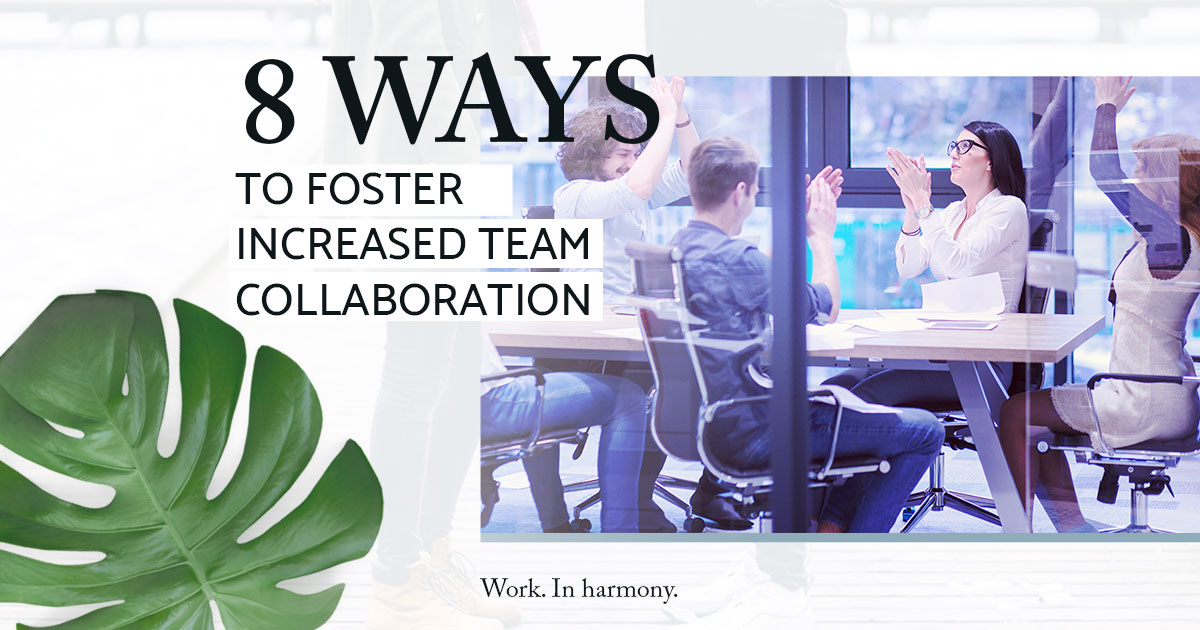Business analyst David Coleman has been following the evolution of collaboration for 30 years and shares that, sadly, not much progress has happened during that time. Sure, Coleman admits, there’s been a notable uptick in people talking about team collaboration as a business topic. CEOs have come to understand the importance of carving out a place where successful teamwork takes place. Just about every business publication, whether online or in print, has churned out no shortage of articles about how to get teams to work together more successfully. Changes in the way that companies are structured, and healthy team dynamics are created, haven’t been speedy in coming. So how can you foster increased team collaboration?
Collaboration technologies, like Heycollab, have finally lit a fire under that evolution. Coleman points to the change in today’s workplace as driving demand for those technologies to be developed. As more organizations adopt a global footprint as well as make use of a larger number of freelancers and contractors, he notes, collaboration has required a tech assist. The proliferation of options for collaboration tools was a natural outgrowth, including Microsoft Teams, Slack, Trello–and of course Heycollab, which has been called the best of Slack and Trello put together.
1) Focus on Relationships.
Coleman makes the distinction that workplace success, today, is about relationships. The technologies that support those relationships, then, are the ones that become most important. Employees’ enthusiastic use of certain collaboration tools supports that presumption, as workers are hungry for a way to interact in secure ways well outside the company’s firewall. Coleman also notes the rise of “third space” workplaces–such as WeWork, Regus–as putting pressure on the growth of collaboration tools that allow employees to access data, project assets and status information from wherever they may be working that day.
Technology marketplace company Spiceworks surveyed more than 900 IT decision-makers across North America and Europe and found that organizations of all sizes are dialing up their adoption of team communication apps.
2) Treat Collaboration Tools As More Than IM.
A new study from Nemertes Research entitled “Unified Communications and Collaboration: 2019 Research Study,” found that nearly half of companies now use team collaboration applications. Unfortunately, the study also found that many employees still view the collaboration tools that they have been handed as (very expensive and exceedingly overqualified) instant-messaging tools. Nemertes predicts that, because of this, collaboration-tool vendors in 2019 will focus on trying to integrate workflows into their offerings. Heycollab, however, is already centered around all-in-one-place collaboration.
3) Give Every Team Structure.
Inc. Magazine sat down with Richard Watkins, of Let’s Go to hear his advice on creating an atmosphere where collaboration is destined to flourish. Watkins stressed that, while many people complain about how creating a collaborative team is hard, they fail to blame the lack of a structure that would encourage it. It’s structure, according to Watkins, that a group needs before the good work can really begin. Heycollab’s workspaces are the start of that structure. A new workspace is created for every project, where all communication for the project will take place and where all assets can be added and reviewed.
Workspaces also help with another of Watkin’s priorities: fast action. He shares that a team needs to see that “change is happening, and this project is real, the project must move from strategy to action, fast.” Within workspaces, every member of the team will be able to share their own progress, as well as see and comment on each piece of work that their colleagues have completed.

4) Make a Space for Communication.
Consulting group Rise Above asserts that communication is one of the most crucial things that needs to exist before successful collaboration can happen. Team members, according to Rise Above, need to be able to express themselves clearly, to successfully manage channels of communication regarding their project, and to understand their responsibilities and report on them regularly to each other.
5) Choose Chat Not Email.
Offering team members a place for instant messaging or chat that is organized by project–and therefore is open to all members of cross functional teams–is a good way to start making those things happen. Heycollab’s Workspaces each include messaging. As you move between Workspaces, you’ll see only the messages that pertain to that project. Within the Workspace you can search messages or filter them. You can react to message that are sent to you, comment on files, or send members assets to review. All of the communication surrounding a project is in one place–and nothing that doesn’t relate to the project is stored there. That means that no reminders or edits get lost or missed, and there are never a bunch of unrelated messages to hunt through when you’re searching for someone’s reply.
6) Let Employees Be Heard in Their Own Language.
Rise Above mentions that employees need to be given the opportunity to express themselves clearly in order to have the possibility of successful collaboration. Giving your teams a tech tool that takes communication out of email and places it right in the Workspace where it belongs is the first step. The next step is to ensure that every colleague is able to share information in the manner that suits them best. That’s even more important when you’re talking about teams that span copywriting, design, UX, development, and beyond. The languages used in each of these disciplines vary, so a lingua franca needs to be developed when they’re all working together.
Heycollab’s interface includes its Media Hub, where assets can be commented on directly. The fact that edits can be applied to the image or item that is in production helps to limit the impact of different languages based on team members’ primary discipline. For creative work, that means that designers are able to see edits and questions in context, which can speed up the feedback process immensely.
 7) Enable Regular Reporting.
7) Enable Regular Reporting.
Heycollab’s Tasks can help organizations act on Rise Above’s recommendation that team members have a way to regularly report on their tasks to the whole group, as well. Tasks offer collaborators a way to split up projects into their smallest pieces, then divvy them out to the team for completion. Members of the team will be able to watch each Task as it progresses through each stage. Time normally reserved for status meetings instead can be used for more productive tasks, and every member of the team is able to feel like they have a hold on where the entire project stands. As Tasks are created and assigned, deadlines can be set for each one, and its sub-tasks as well.
8) Offer Visual Collaboration to Foster Increased Team Collaboration.
It’s not new information that humans take information in best when there is a visual component to its delivery. In one study, for instance, information retention after three days was improved by over 50 percent when visuals were part of the way that a lecture was taught.
Another study by Forrester Consulting looked at what advantages could be gained when workers were able to see their work laid out in front of them, a visual representation of their goals, as well as all of the individual tasks that will need to be accomplished in order to get there. The study found that flat updates become immersive experiences when work plans become both visible and accessible to the entire team. Using a technology-based collaboration tool that included a visual component had many benefits according to Forrester. Among them were: improved internal workflow and collaboration, an increase in closed sales, reduced time spent at earlier stages in the sales path, and better customer service.
Heycollab includes a visual component in every stage of work planning and collaboration. Images can be added to any task. Tasks can be visually arranged by due dates and team members, and they can be color coordinated as well. For teams that are motivated by the look and feel of a given project, Workspaces can even be customized with backgrounds that represent the work that’s being done.

